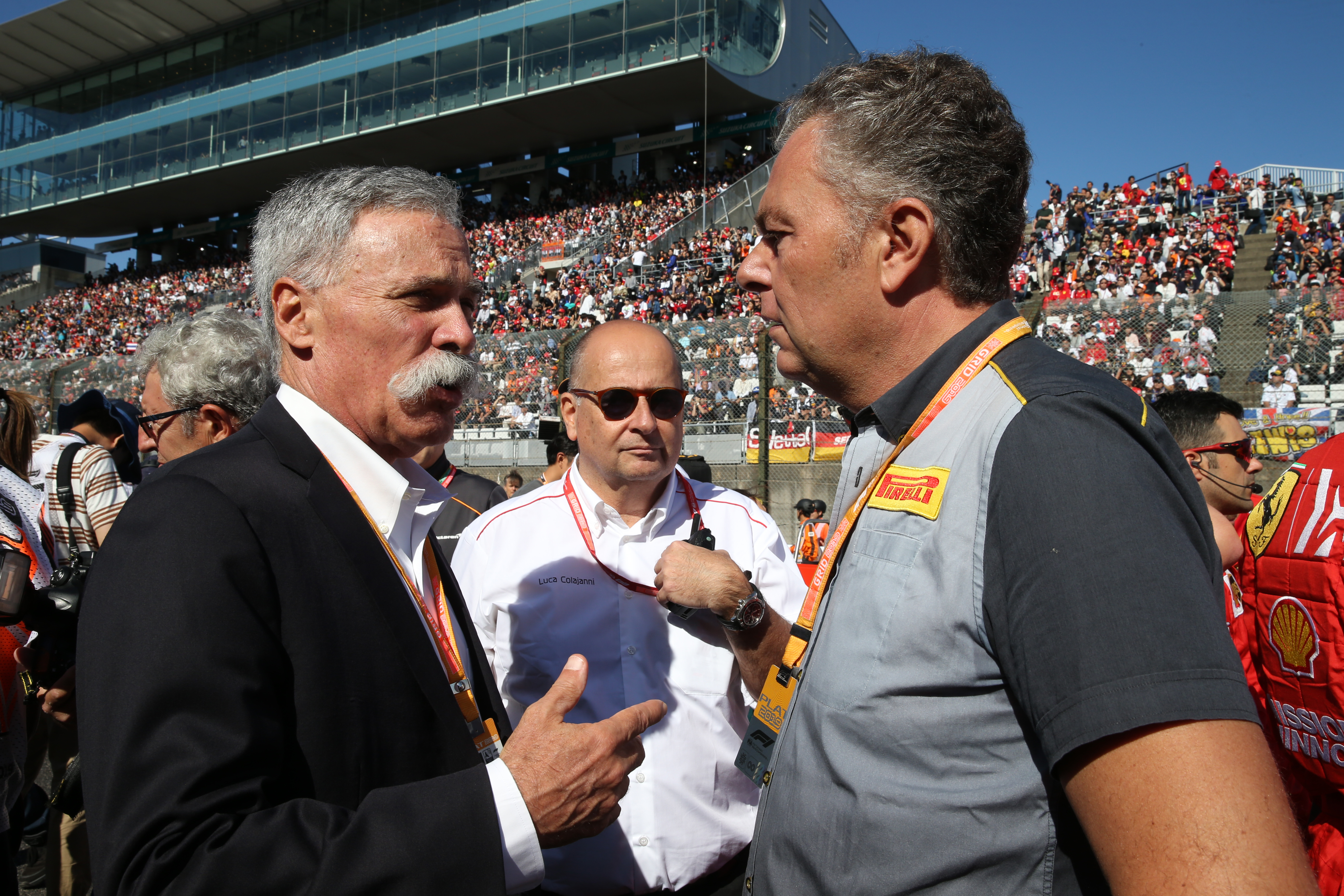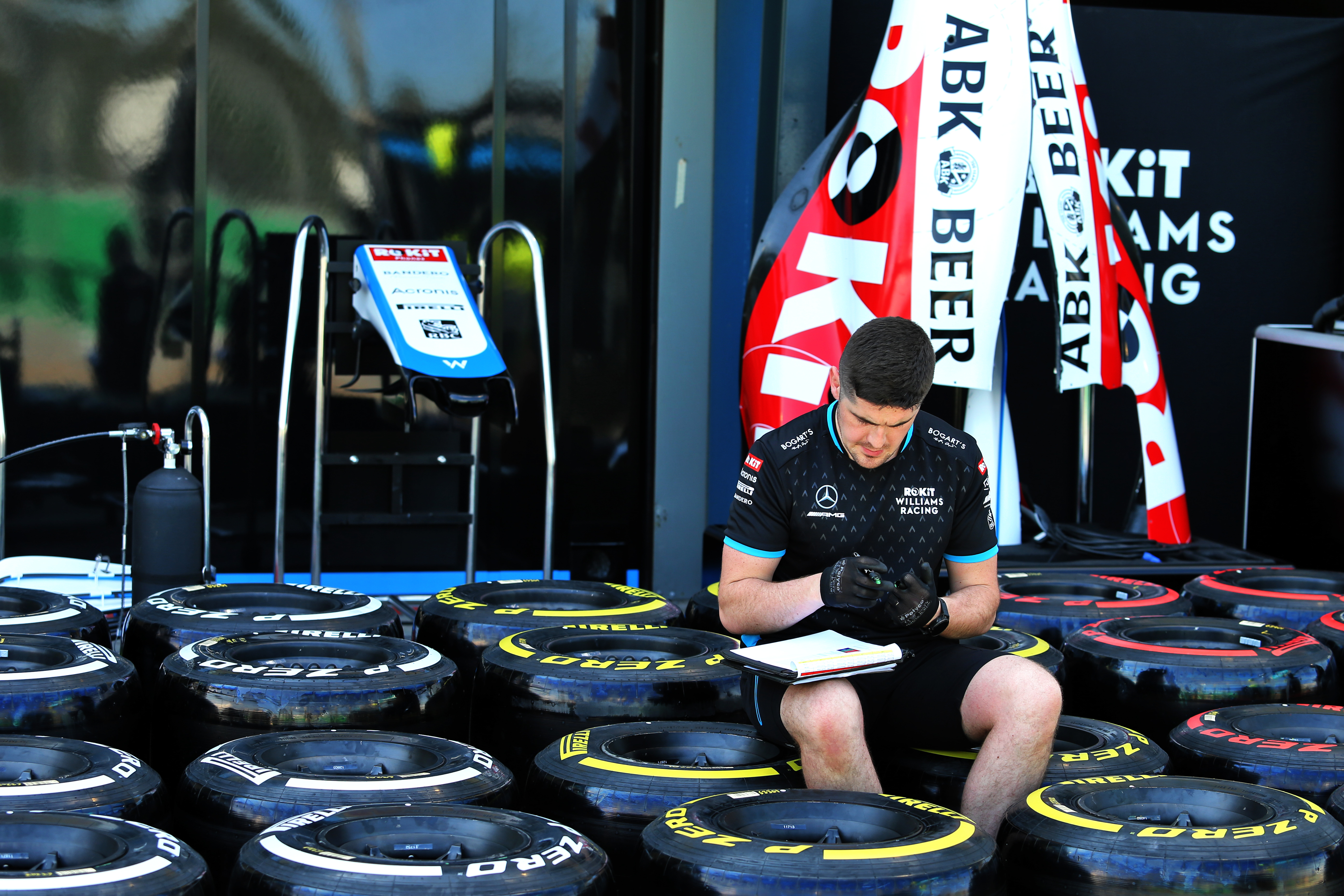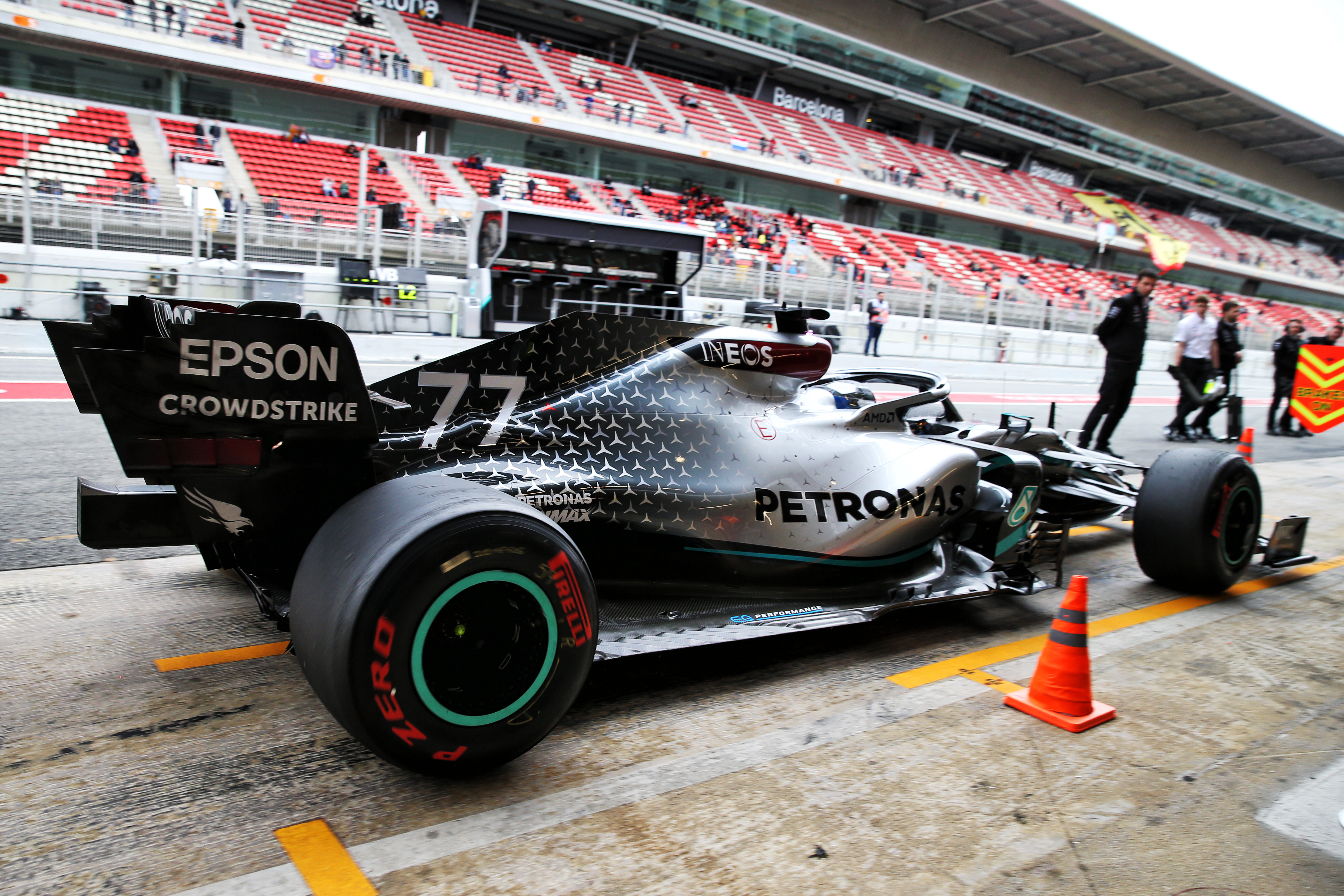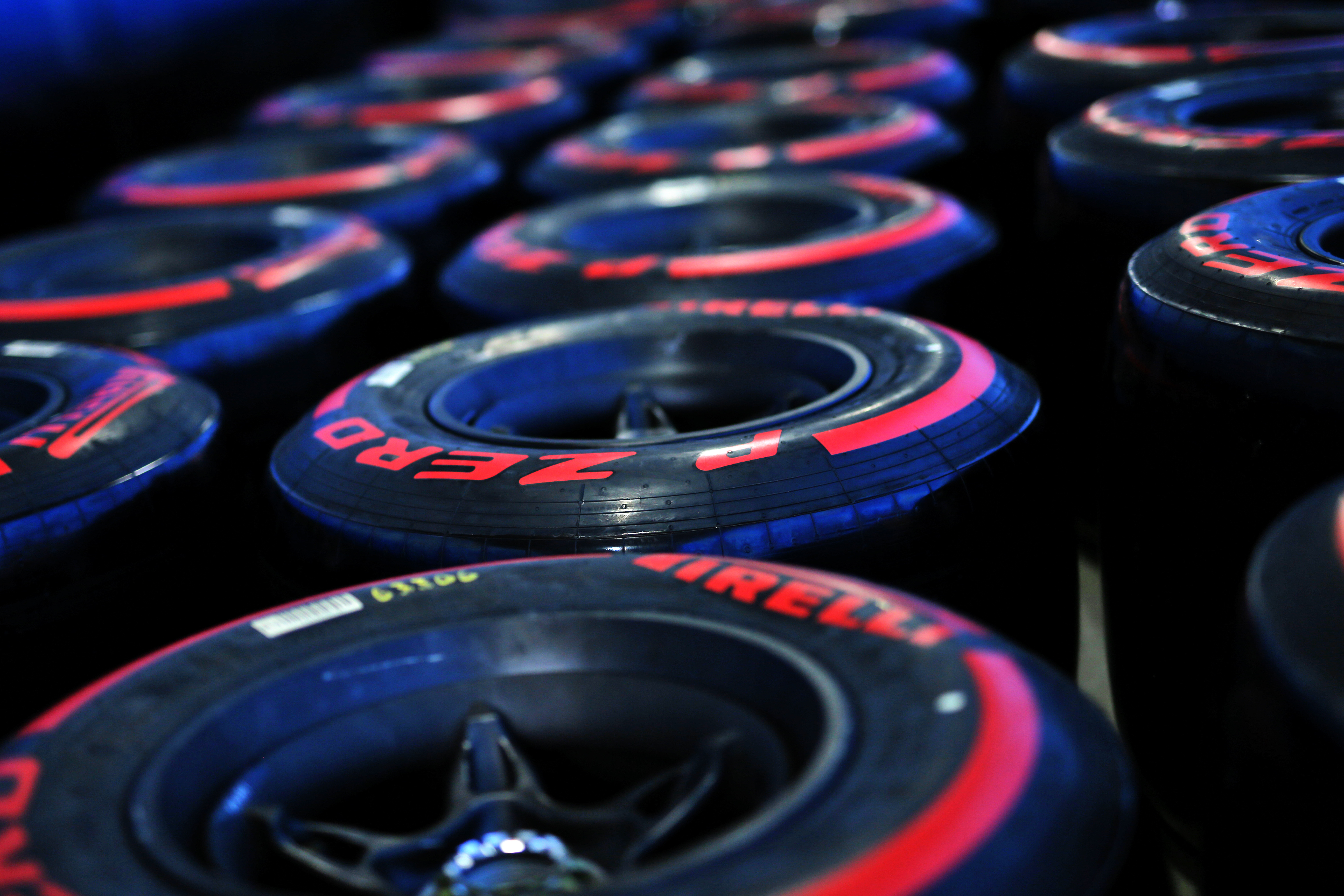Formula 1 still holds out hope of going racing in 2020 and wants to be ready as soon as that opportunity arises. That is easier said than done when the world is adhering to various lockdown measures and ‘normality’ feels a long way off.
The F1 season works on a carefully structured schedule that has been torn apart by the current health crisis. Among the far-reaching consequences is Pirelli’s plan to produce and deliver enough tyres for F1 to go racing: eight weeks notice for European races, 14 weeks for the flyaways.
Such timelines are completely incompatible with coronavirus uncertainty. It presents a serious supply issue that needs an emergency fix.
There are three key factors defining Pirelli’s efforts to ensure F1 has enough tyres to race with: how much notice it gets before racing resumes, how many tyres are already available, and how many of each compound will be needed.
The first point is the cork in the bottle.

“If we have enough notice, we can make a plan,” Pirelli F1 boss Mario Isola tells The Race.
“We told the FIA, the teams and F1 that in the spirit [of the situation] we try to give maximum flexibility to support any plan.
“But we have restrictions, as does everybody else. We are not different from teams, we have to respect any restriction imposed by the government.
“To understand how much flexibility we have, it’s important to have a calendar and to understand which restrictions are in place.”
There is a healthy amount of existing stock, even though Pirelli cannot use the 1800 tyres it took to Australia because they were all mounted onto rims.
If there is a revised 2020 schedule it will look nothing like the original. And that means a mix of races with different compound requirements
Fortunately, Pirelli is able to re-deploy the tyres it had already produced for Bahrain, Vietnam and China. It is in the process of collecting the containers of tyres that were being shipped to the Middle-East and Asia, and they will still be usable.
“They are thermally-controlled containers so we keep the tyres at the right temperature,” says Isola.
“It’s like keeping the tyres in the warehouse.”
As for the tyres produced for China, Pirelli was able to stop the shipment before it ever left.
In addition to the thousands of tyres Pirelli had produced for these flyaway events, it was also working on the required tyres for Zandvoort, Barcelona and Baku.

“We have now got a number of tyres available,” says Isola. “When we have a new calendar or a rough idea of a new calendar we can make a plan.
“We are not producing tyres right now because our factories are closed, they are respecting the shutdown imposed by different governments.
“But we have a good number in stock.”
There are a reasonable mix of compounds already produced, too: from the C1 (hardest) to C4 (second-softest) in the range.
This is important because if there is a revised 2020 schedule it will look nothing like the original. And that means a mix of races with different compound requirements.
Therefore, Pirelli only needs to focus on producing the C5 tyre in bulk, and these are only needed for a small number of races. The C1 compound was used sparingly last year, including Spain, Britain, Belgium and Japan. The C2, C3 and C4 are the most used across the season and they are the compounds Pirelli has already produced in serious numbers.
So Pirelli should have a healthy headstart when it comes to actually having the tyres to hand, because it can just redirect tyres that were meant for Bahrain to be used in Hungary, for example.
“We can use the tyres for any event,” says Isola. “They are all the same.
“Provided we selected the same compounds, we can use them in any event.
“Let’s see what they put together for the calendar. Maybe we don’t have the same number of allocations [for the teams], but we can make a plan.”

Of course, Pirelli will need to produce more tyres swiftly as soon as restrictions are lifted in Romania, where its F1 tyres are made.
But it is not the biggest headache, and will be eased further with fewer races and, potentially, reduced track time if Fridays are axed from the grand prix weekend to facilitate a condensed schedule.
While Pirelli can be confident of having enough tyres, the bigger hurdle is distributing them in time. It’s no good having thousands of tyres ready if they are stuck in a warehouse or still being shipped when a grand prix is supposed to happen.
“If the tyres are available in our warehouse, we need say three weeks. We can supply the tyres to Zandvoort or Barcelona or any other European event provided that the tyres are available” :: Mario Isola
Fortunately, if production is taken care of, then it is ‘just’ a matter of transporting the tyres and the window required to do that shrinks. With a sensible heads up from F1 in terms of starting the season, this should not pose a major challenge.
“For example, if we start the season with an overseas event, but we can use tyres that are already available coming back from other races, we have time to deliver,” says Isola.
“It just depends where we’re planning to deliver the tyres.
“For European events it’s easier. We have to load the tyres on our trucks and take them to the circuit. It’s quicker.”

So how much time can realistically be trimmed compared to the ideal scenario?
“If the tyres are available in our warehouse, we need say, three weeks,” says Isola. “We can supply the tyres to Zandvoort or Barcelona or any other European event provided that the tyres are available.
“If we have to produce the tyres then there is a different impact.
“And if we consider the overseas events, there is a lot more variability.
“If we talk about Canada it’s probably five or six weeks. If we talk about Japan it’s probably a lot more, the transit time is much longer.”
F1 could be months, let alone weeks, from even finalising a revised 2020 schedule. And if the championship can get up and running, it will surely be in a world where the production and logistical restrictions that could undermine Pirelli’s efforts are no longer in place.
That should be more than enough time to be ready. And Pirelli and F1 will do all that is required to ensure there are enough black circles to stick on the cars when the opportunity arises.
But like anything at the moment, the tried, tested and relatively straightforward procedure has to be abandoned.
Waiting, waiting and waiting, then being ready to act quickly, has become the new normal.

